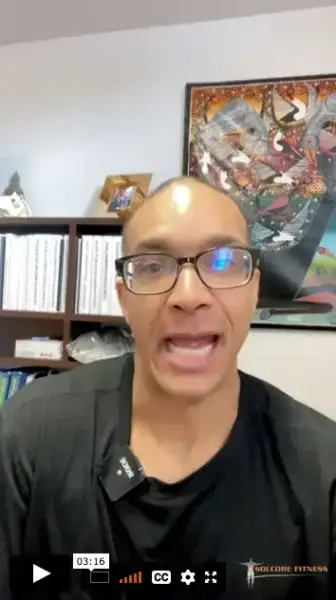
Happy Friday. Let’s talk about what may be the most important thing you can do to avoid injury and maximize performance in your sports and daily activities: train your fascia.
What Is Fascia, and Why Does It Matter?
Your body isn’t just a collection of muscles, bones, joints, and viscera that operate in isolation. All these systems are integrated and connected via fascia a web-like soft tissue network that unites every part of your body. Imagine one continuous sheet of connective tissue weaving through and wrapping around bones, muscles, ligaments, and even organs. The more this “fabric” is balanced, the more balanced and functional your entire body becomes.
Rods—your bones—form the framework, while joints act as junction points and the fascia is the ever-present, adaptable tissue holding it all together. This system doesn’t just run through the muscles and bones, but actually connects deeper into the joints, ligaments (like the periosteum along your bones), and even the layers of nerves. When your fascia is connected and hydrated, you have a body “suspension system” that’s resilient, responsive, and strong.
“What holds you up isn’t just bones; it’s the many layers of fascia. When trained, healthy, and hydrated, these layers help distribute forces and keep you moving pain-free even under stress or repetitive activities.” (Transcript excerpt)
Balance & Integrity: The Secret of Injury Prevention
So why do people get hurt—during sports, movement, or even ordinary activities like walking? It’s usually not because a single part fails, but because the balance and integrity of the entire fascial network has been compromised. When fascia is out of place, dried out, or not functioning, force from movement isn’t properly distributed. This results in overload, compensation, and—eventually—pain or injury, especially during higher-demand activities like running, skiing, or cycling.
In other words, healthy fascia is your insurance policy against injury. You’re “good” if this system works. You’re at risk if you neglect it.
“The more balanced your fascia is, the more likely you are to move without pain and build strength and coordination in everything you do.” (Transcript)
How to Train Your Fascia (and Why It’s For Everyone)
The good news: anyone can train fascia. You don’t need fancy equipment. You don’t have to be an elite athlete. It’s for active people of all backgrounds—especially anyone feeling slowed down by pain, stiffness, or lack of mobility.
Here’s what fascia-focused training involves:
- Targeted Stretching and Strengthening: Not your average stretching. These are specialized movements (like ELDOA, myofascial stretching, segmentation, and GPS exercises) designed to mobilize the entire connective network, not just a single muscle or joint.
- Layered Progressions: Fascia needs multi-planar, multi-layered work. The same way your hip or spine has layers of fascia, training builds up each layer so you create long-lasting resilience, not just fleeting flexibility.
- Hydration and Recovery: Hydrated fascia is pliable and responsive. Drink plenty of water and prioritize restorative practices like bodywork and massage.
- Connection and Awareness: Every stretch, movement, or exercise should be done with attention—mind-body connection is crucial! Awareness enhances neuromuscular re-patterning and the effectiveness of the fascia work.
- Holistic Strength: Fascia supports and integrates strength—when you train the whole system, you improve posture, energy transfer, and even joint health.
If you think you’re “just not flexible,” or that your body is different or too old to move well, think again. Fascia adapts at every age if trained with a program tailored to YOUR needs and movement patterns.
Why Most Injury-Prevention Programs Miss the Mark
Most injury-prevention routines focus just on muscles, joints, or isolated corrective exercises. But if you leave out the fascial connection, you’ll always be working uphill.
Our holistic program is different. We assess and address your entire fascial landscape pinpointing weak, restricted, or dehydrated areas and integrating strength, mobility, and balance training that gets YOU moving, pain-free and confident.
This approach has helped hundreds just like you not through magic, but through a sustainable, individualized plan that respects your unique body and goals.
Ready to Move With Freedom?
If you’re active but slowed by pain or stiffness, it’s time to do something different and smarter. Focus on exactly what your body needs, not generic programs from YouTube or quick fixes from friends.
[Book a free consult] to talk with me about a holistic fascia program available both in-person and online customized to get you back to the life and activities you love.
it’s not just working out, it’s building a foundation for a better life.
Find out more @

Leave a Reply